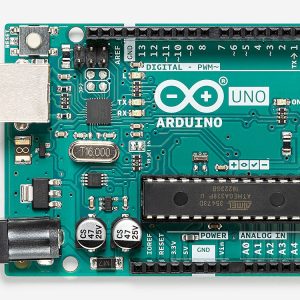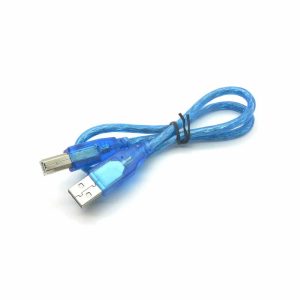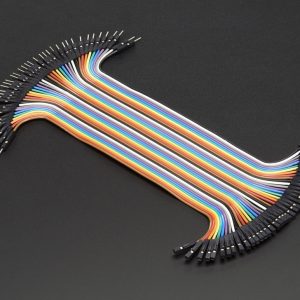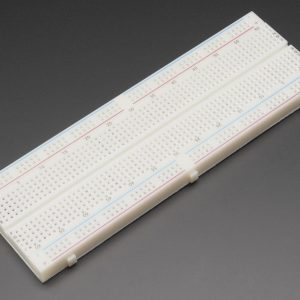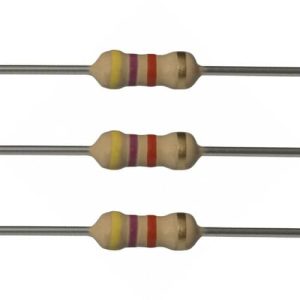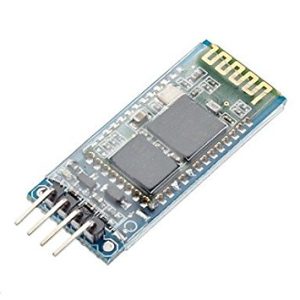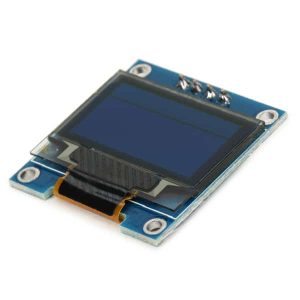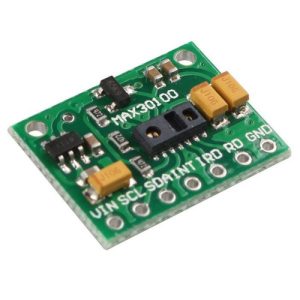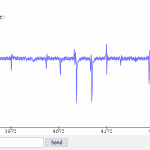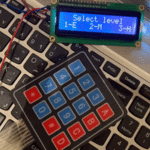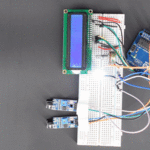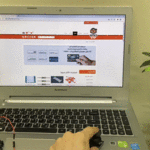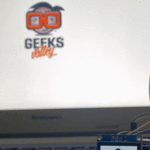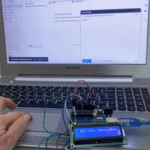الكود البرمجي
ارفع الكود البرمجي على لوحة الاردوينو باستخدام برنامج اردوينو (IDE).
#include <Wire.h>
#include "MAX30100_PulseOximeter.h"
#include "Wire.h"
#include "Adafruit_GFX.h"
#include "OakOLED.h"
#define REPORTING_PERIOD_MS 1000
OakOLED oled;
PulseOximeter pox;
uint32_t tsLastReport = 0;
const unsigned char bitmap [] PROGMEM=
{
0x00, 0x00, 0x00, 0x00, 0x01, 0x80, 0x18, 0x00, 0x0f, 0xe0, 0x7f, 0x00, 0x3f, 0xf9, 0xff, 0xc0,
0x7f, 0xf9, 0xff, 0xc0, 0x7f, 0xff, 0xff, 0xe0, 0x7f, 0xff, 0xff, 0xe0, 0xff, 0xff, 0xff, 0xf0,
0xff, 0xf7, 0xff, 0xf0, 0xff, 0xe7, 0xff, 0xf0, 0xff, 0xe7, 0xff, 0xf0, 0x7f, 0xdb, 0xff, 0xe0,
0x7f, 0x9b, 0xff, 0xe0, 0x00, 0x3b, 0xc0, 0x00, 0x3f, 0xf9, 0x9f, 0xc0, 0x3f, 0xfd, 0xbf, 0xc0,
0x1f, 0xfd, 0xbf, 0x80, 0x0f, 0xfd, 0x7f, 0x00, 0x07, 0xfe, 0x7e, 0x00, 0x03, 0xfe, 0xfc, 0x00,
0x01, 0xff, 0xf8, 0x00, 0x00, 0xff, 0xf0, 0x00, 0x00, 0x7f, 0xe0, 0x00, 0x00, 0x3f, 0xc0, 0x00,
0x00, 0x0f, 0x00, 0x00, 0x00, 0x06, 0x00, 0x00, 0x00, 0x00, 0x00, 0x00, 0x00, 0x00, 0x00, 0x00
};
void onBeatDetected()
{
Serial.println("Beat!");
oled.drawBitmap( 60, 20, bitmap, 28, 28, 1);
oled.display();
}
void setup()
{
Serial.begin(9600);
oled.begin();
oled.clearDisplay();
oled.setTextSize(1);
oled.setTextColor(1);
oled.setCursor(0, 0);
oled.println("Initializing pulse oximeter..");
oled.display();
Serial.print("Initializing pulse oximeter..");
if (!pox.begin()) {
Serial.println("FAILED");
oled.clearDisplay();
oled.setTextSize(1);
oled.setTextColor(1);
oled.setCursor(0, 0);
oled.println("FAILED");
oled.display();
for(;;);
} else {
oled.clearDisplay();
oled.setTextSize(1);
oled.setTextColor(1);
oled.setCursor(0, 0);
oled.println("SUCCESS");
oled.display();
Serial.println("SUCCESS");
}
pox.setOnBeatDetectedCallback(onBeatDetected);
}
void loop()
{
pox.update();
if (millis() - tsLastReport > REPORTING_PERIOD_MS) {
Serial.print("Heart BPM:");
Serial.print(pox.getHeartRate());
Serial.print("-----");
Serial.print("Oxygen Percent:");
Serial.print(pox.getSpO2());
Serial.println("\n");
oled.clearDisplay();
oled.setTextSize(1);
oled.setTextColor(1);
oled.setCursor(0,16);
oled.println(pox.getHeartRate());
oled.setTextSize(1);
oled.setTextColor(1);
oled.setCursor(0, 0);
oled.println("Heart BPM");
oled.setTextSize(1);
oled.setTextColor(1);
oled.setCursor(0, 30);
oled.println("Spo2");
oled.setTextSize(1);
oled.setTextColor(1);
oled.setCursor(0,45);
oled.println(pox.getSpO2());
oled.display();
tsLastReport = millis();
}
}
شرح الكود البرمجي
هنا سيتم تعريف المكتبات المستخدمة في المشروع.
عليك تحميل المكتبات التالية:
1. Arduino MAX30100 Library
2. OkaOLED Library
3. Adafruit GFX Library
وذلك بالرجوع للملف المضغوط، لمعرفة كيفية تنزيل المكتبات يمكنك الرجوع إلى الدرس التالي.
بعد تحميل الملف فك الضغط عنه سيكون هناك 3 مكتبات، أضف كل مكتبة على حدة لقائمة المكتبات.
#include <Wire.h> #include "MAX30100_PulseOximeter.h" #include "Wire.h" #include "Adafruit_GFX.h" #include "OakOLED.h"
هنا سيتم تعريف المتغير الخاص بالشاشة OLED.
OakOLED oled;
وهنا سيتم تعريف المتغير الخاص بمستشعر نبضات القلب والأكسجين.
PulseOximeter pox;
في هذه الأسطر يتم تهيئة مصفوفة تضم مجموعة من المتغيرات والتي تخص الشاشة OLED.
const unsigned char bitmap [] PROGMEM=
{
0x00, 0x00, 0x00, 0x00, 0x01, 0x80, 0x18, 0x00, 0x0f, 0xe0, 0x7f, 0x00, 0x3f, 0xf9, 0xff, 0xc0,
0x7f, 0xf9, 0xff, 0xc0, 0x7f, 0xff, 0xff, 0xe0, 0x7f, 0xff, 0xff, 0xe0, 0xff, 0xff, 0xff, 0xf0,
0xff, 0xf7, 0xff, 0xf0, 0xff, 0xe7, 0xff, 0xf0, 0xff, 0xe7, 0xff, 0xf0, 0x7f, 0xdb, 0xff, 0xe0,
0x7f, 0x9b, 0xff, 0xe0, 0x00, 0x3b, 0xc0, 0x00, 0x3f, 0xf9, 0x9f, 0xc0, 0x3f, 0xfd, 0xbf, 0xc0,
0x1f, 0xfd, 0xbf, 0x80, 0x0f, 0xfd, 0x7f, 0x00, 0x07, 0xfe, 0x7e, 0x00, 0x03, 0xfe, 0xfc, 0x00,
0x01, 0xff, 0xf8, 0x00, 0x00, 0xff, 0xf0, 0x00, 0x00, 0x7f, 0xe0, 0x00, 0x00, 0x3f, 0xc0, 0x00,
0x00, 0x0f, 0x00, 0x00, 0x00, 0x06, 0x00, 0x00, 0x00, 0x00, 0x00, 0x00, 0x00, 0x00, 0x00, 0x00
};
في الدالة ()onBeatDetected سيتم قراءة البيانات من مستشعر نبضات القلب والأكسجين وطباعتها على الشاشة OLED.
void onBeatDetected()
{
Serial.println("Beat!");
oled.drawBitmap( 60, 20, bitmap, 28, 28, 1);
oled.display();
}
في الدالة ()setup سيتم طباعة القيم المقروءة من مستشعر نبضات القلب والأكسجين وإذا تعذر ذلك سيتم طباعة الكلمة Failed بمعنى فشلت عملية القراءة هنا لابد التأكد من توصيل المستشعر بالشكل الصحيح.
void setup()
{
Serial.begin(9600);
oled.begin();
oled.clearDisplay();
oled.setTextSize(1);
oled.setTextColor(1);
oled.setCursor(0, 0);
oled.println("Initializing pulse oximeter..");
oled.display();
Serial.print("Initializing pulse oximeter..");
if (!pox.begin()) {
Serial.println("FAILED");
oled.clearDisplay();
oled.setTextSize(1);
oled.setTextColor(1);
oled.setCursor(0, 0);
oled.println("FAILED");
oled.display();
for(;;);
} else {
oled.clearDisplay();
oled.setTextSize(1);
oled.setTextColor(1);
oled.setCursor(0, 0);
oled.println("SUCCESS");
oled.display();
Serial.println("SUCCESS");
}
pox.setOnBeatDetectedCallback(onBeatDetected);
}
في الدالة ()loop سيتم قراءة معدل ضربات القلب ونسبة الأكسجين في الدم وطباعتها على الشاشة OLED وإرسال البيانات عن طريق البلوتوث إلى جهاز الاندرويد.
سيتم تحديث البيانات كل ثانية لكي يتم أخذ القراءات أولًا بأول.
void loop()
{
pox.update();
if (millis() - tsLastReport > REPORTING_PERIOD_MS) {
Serial.print("Heart BPM:");
Serial.print(pox.getHeartRate());
Serial.print("-----");
Serial.print("Oxygen Percent:");
Serial.print(pox.getSpO2());
Serial.println("\n");
oled.clearDisplay();
oled.setTextSize(1);
oled.setTextColor(1);
oled.setCursor(0,16);
oled.println(pox.getHeartRate());
oled.setTextSize(1);
oled.setTextColor(1);
oled.setCursor(0, 0);
oled.println("Heart BPM");
oled.setTextSize(1);
oled.setTextColor(1);
oled.setCursor(0, 30);
oled.println("Spo2");
oled.setTextSize(1);
oled.setTextColor(1);
oled.setCursor(0,45);
oled.println(pox.getSpO2());
oled.display();
tsLastReport = millis();
}
}

